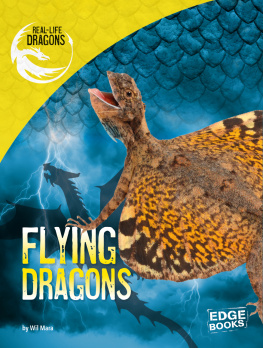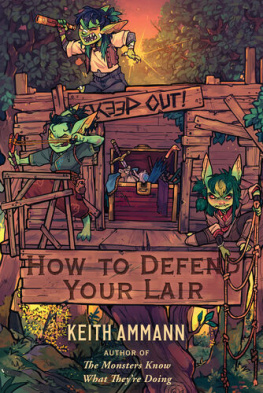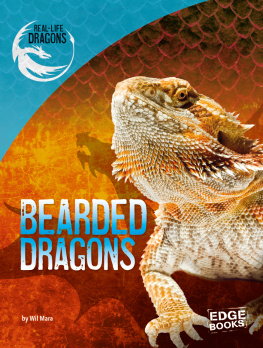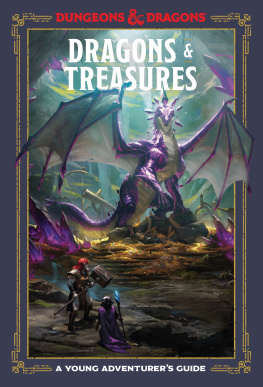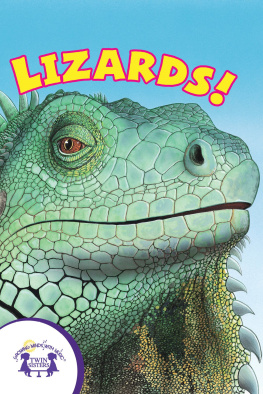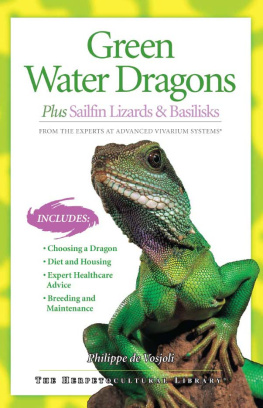
Please visit our website, www.enslow.com. For a free color catalog of all our high-quality books, call toll free 1-800-398-2504 or fax 1-877-980-4454.
Library of Congress Cataloging-in-Publication Data
Names: Tobler, Elise, 1970 author.
Title: Komodo dragons are the largest lizards! / Elise Tobler.
Description: New York: Enslow Publishing, [2021] | Series: Reptiles rock!
| Includes index.
Identifiers: LCCN 2019050706 | ISBN 9781978518308 (library binding) | ISBN
9781978518285 (paperback) | ISBN 9781978518292 (six-pack) | ISBN 9781978518315
(ebook)
Subjects: LCSH: Komodo dragonJuvenile literature.
Classification: LCC QL666.L29 T63 2021 | DDC 597.95/968dc23
LC record available at https://lccn.loc.gov/2019050706
Published in 2021 by
Enslow Publishing
101 West 23rd Street, Suite #240
New York, NY 10011
Copyright 2021 Enslow Publishing
Designer: Laura Bowen
Editor: Elise Tobler
Photo credits: Cover, p. Andrew Parsons PA Images/Contributor/PA Images/Getty Images.
Portions of this work were originally authored by Kathleen Connors and published as Komodo Dragons. All new material this edition authored by Elise Tobler.
All rights reserved. No part of this book may be reproduced in any form without permission in writing from the publisher, except by a reviewer.
Printed in the United States of America
Some of the images in this book illustrate individuals who are models. The depictions do not imply actual situations or events.
CPSIA compliance information: Batch #BS20ENS: For further information contact Enslow Publishing, New York, New York, at 1-800-398-2504.

CONTENTS
Words in the glossary appear in bold type the first time they are used in the text.
DRAGONS OF UNUSUAL SIZE
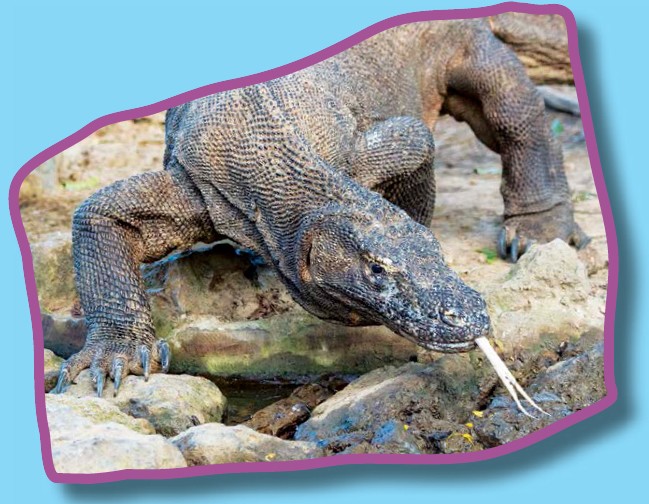
Komodo dragons are the largest lizards in the world! They were first called land crocodiles. In the wild, they live in Komodo National Park in Indonesia, a country made up of islands in Southeast Asia.
The average length of a male Komodo dragon is 8 to 9 feet (2.4 to 2.7 m), but some as long as 10 feet (3 m) have been recorded. Female Komodo dragons are usually 6 feet (1.8 m) long. The largest Komodo dragon ever found weighed 366 pounds (166 kg)!
GET THE FACTS!
In 1926, American W. Douglas Burden traveled to Indonesia to capture Komodo dragons. He wanted the world to see how amazing they were. His journey inspired the movie King Kong, about the journey to capture a huge, never-before-seen ape.

HERE THERE BE DRAGONS

Komodo dragons can be many different colors, from green and gray to blue and orange. Their bodies are covered in scales called osteoderms. These scales are hard like armor and make Komodo dragons difficult to bite or hurt. The older the lizard gets, the harder its scales become.

Komodo dragons often wrestle to test their strength.
The tail of a Komodo dragon is usually as long as its body and is one big muscle. Komodo dragons can use their tail for balance or defense. They use it to knock over predators. Mostly, the only predators of Komodo dragons are other Komodo dragons!
GET THE FACTS!
Komodo dragons originally came from Australia. Fossil records show that Komodo dragons traveled to Indonesia about 900,000 years ago, walking and swimming to reach the islands. They vanished from Australia 50,000 years ago, when humans began to arrive.
HOME SWEET HOME
Komodo dragons love hot weather, so the Lesser Sunda Islands of Indonesia where they live are perfect for them. The Lesser Sunda Islands are north of Australia and are called an archipelago. These islands have jungles, beaches, and volcanoes.

Komodo dragons have done so well on these islands because there arent any larger carnivores, or meat eaters, there. This means the Komodo dragons are in charge! They love to lay on warm beaches and also enjoy the forests. Sometimes, they dig burrows, or holes, to escape the heat. They will also take over burrows made by other animals.

GET THE FACTS!
Komodo dragons sometimes swim between islands to find better food. They like familiar surroundings and dont stay away from home for long.
SMELLING WITH A TONGUE
Komodo dragons have a very strong sense of smell, but their nose doesnt do all the work. Like the tongues of snakes and other reptiles, the tongue of the Komodo dragon is one of its most important smelling tools.
When Komodo dragons flick their tongue into the air, it brings back smells that they can taste. The tongue is split, which means if the taste is stronger on the right side, a Komodo dragon knows what its looking for is to the right.

GET THE FACTS!
Komodo dragons have a metabolism that is more like that of mammals. This means they digest, or break down, food quickly. This helps them move quickly so they can hunt bigger animals.
DINERS, DRAGONS, AND DIVES
Komodo dragons are carnivores. That means they eat meat. They will hunt very big animals, such as water buffalo and deer. They will also hunt smaller animals, like pigs. Often, they feed on carrion, or dead animals, left behind by other animals.
Komodo dragons have big appetites. They can eat as much as 80 percent of their body weight in one sitting! Komodo dragons will also often eat bones and hooves, but they spit these out later in the form of a pellet, much like owls do.
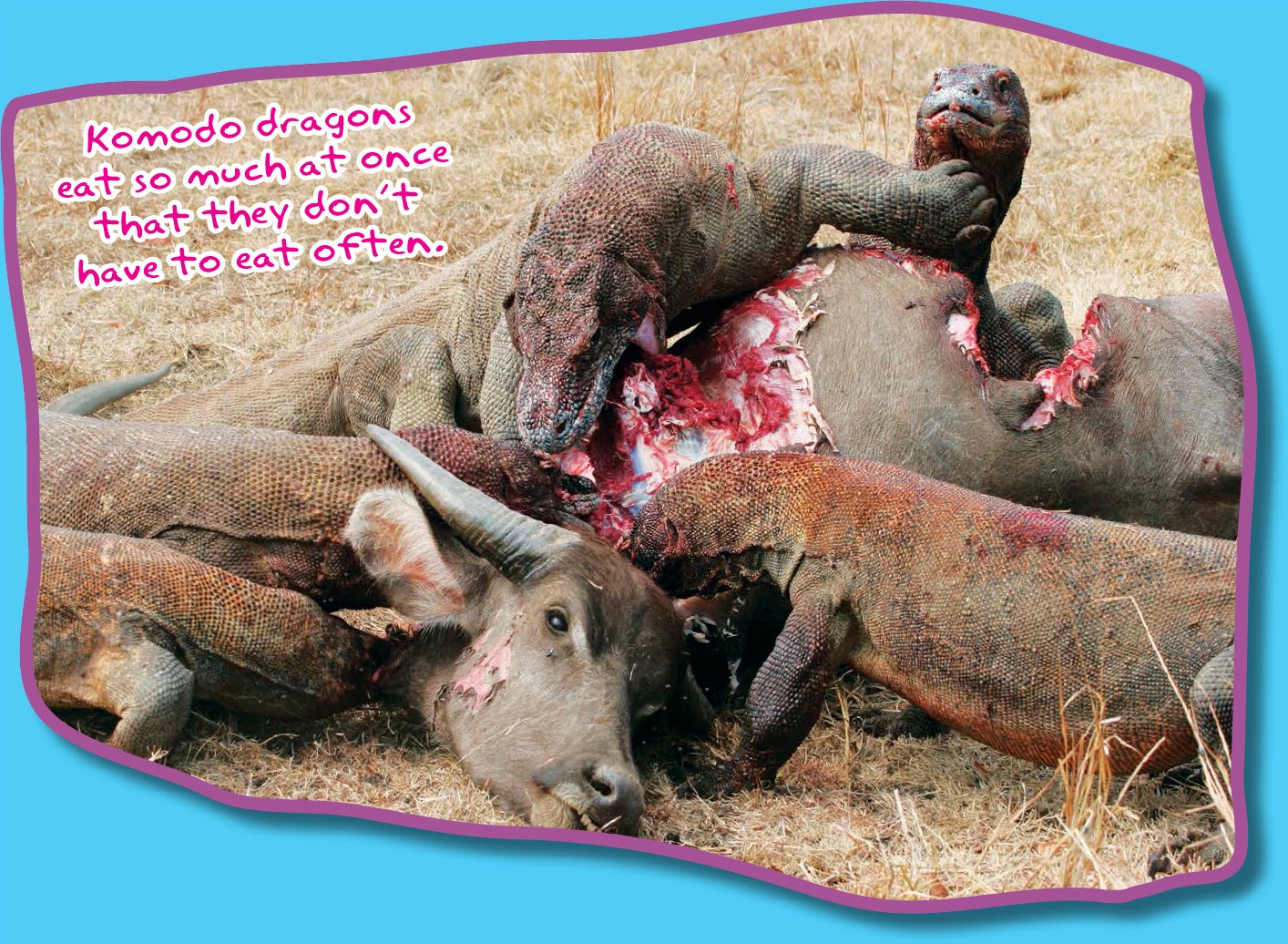
GET THE FACTS!
Sometimes, adult Komodo dragons will eat baby Komodo dragons. To camouflage themselves, baby Komodo dragons will roll themselves in poop! This makes them smell like something an adult doesnt want to eat.
AMBUSH!
Komodo dragons can move pretty fast considering how large they are. They can run anywhere from 10 to 13 miles (16 to 20 km) per hour. But their speed isnt often used when they hunt. Komodo dragons like to hide, wait, and ambush their prey. Ambush means they jump out and surprise the animal!
Even if the prey escapes, its doomed. The bite of a Komodo dragon contains venom, or poison made in its body. It kills the prey. Komodo dragons use their sense of smell to find the body.




